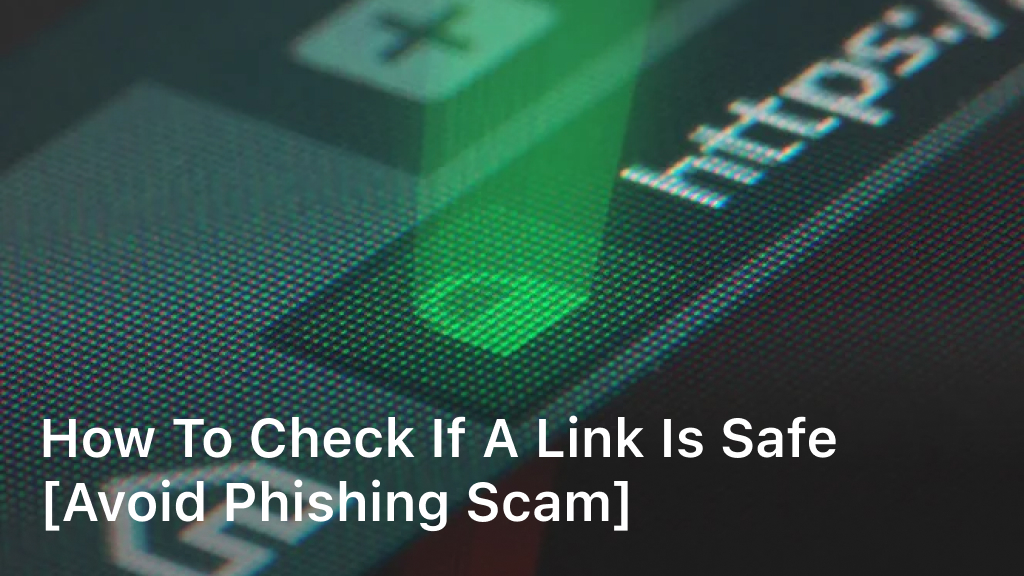In today’s digital age, the proliferation of online threats has made it imperative to prioritize the safety of the links you encounter. Among these threats, phishing scams stand out as a major concern, posing substantial risks to individuals and businesses alike.
These scams frequently result in severe consequences such as identity theft, financial losses, and various forms of cybercrime. Given the prevalence and severity of these risks, it becomes crucial to develop the ability to discern between safe and malicious links in order to safeguard both personal information and sensitive data.
To navigate the ever-evolving landscape of online security threats, it’s essential to equip yourself with the knowledge and skills necessary to identify potential risks associated with the links you encounter. By understanding the telltale signs of phishing attempts and malicious links, individuals can take proactive measures to protect themselves from falling victim to cyberattacks.
This includes adopting best practices for link safety, implementing security protocols, and staying informed about emerging threats. With a proactive approach and a commitment to digital vigilance, individuals can mitigate the risks posed by malicious links and safeguard their online activities effectively.

Understanding Phishing Scams
Phishing scams represent a prevalent cyber threat where malicious actors impersonate trusted entities to trick unsuspecting individuals into divulging sensitive information or engaging in harmful activities. These scams leverage sophisticated social engineering techniques to manipulate users’ trust and induce them into clicking on deceptive links or disclosing confidential data.
Often, these fraudulent attempts appear highly convincing, mimicking the branding and communication styles of legitimate organizations to deceive their targets effectively.
To combat the growing menace of phishing scams, individuals must remain vigilant and develop a keen awareness of common phishing tactics employed by cybercriminals. By staying informed about the latest phishing trends and techniques, users can better recognize suspicious emails, messages, or websites and avoid falling victim to these fraudulent schemes.
Additionally, implementing robust cybersecurity measures, such as multi-factor authentication and security awareness training, can further fortify defenses against phishing attacks. Through proactive education and the adoption of security best practices, individuals can enhance their resilience to phishing scams and safeguard their sensitive information from exploitation by cybercriminals.
Signs of Unsafe Links
When assessing the safety of links, it’s crucial to adopt a discerning approach and examine multiple factors. One key indicator of a potentially unsafe link is a suspicious URL that diverges from its claimed destination. Pay close attention to URLs with unfamiliar or irregular domain names, as well as those that feature spelling errors or unusual characters. Moreover, links accompanied by urgent or coercive language, along with requests for sensitive personal or financial details, should trigger caution and prompt further investigation.
Furthermore, users should exercise caution when encountering links embedded within unsolicited emails, messages, or social media posts, particularly if they originate from unknown or untrusted sources. Avoid clicking on links that seem out of context or unusually insistent, as they may lead to phishing websites or malware-infected pages. By remaining vigilant and employing critical thinking when evaluating links, individuals can mitigate the risk of falling victim to phishing scams and other malicious online activities.
Tools for Checking Link Safety
Fortunately, several tools can help assess the safety of links before clicking on them. Antivirus software often includes features that scan websites for potential threats. Similarly, URL scanners analyze links in real-time to identify malicious content. Browser extensions such as Web of Trust (WOT) provide additional security by displaying reputation ratings for websites.
Manual Verification Methods
In addition to relying on software tools, manual verification methods can further enhance link safety. Hovering over links without clicking on them allows you to preview the destination URL, helping identify any discrepancies or redirects. Furthermore, verify the sender’s identity and ensure the email or message is from a trusted source. Finally, research the reputation of websites by checking reviews or using online reputation services.
Conclusion
In conclusion, safeguarding against phishing scams requires diligence and awareness. By understanding the signs of unsafe links and employing the right tools and verification methods, you can mitigate the risk of falling victim to phishing attacks. Remember to stay vigilant and always verify the safety of links before interacting with them to protect yourself and your sensitive information from cyber threats.
FAQ
How can I tell if an email contains a phishing link?
Look for suspicious sender addresses, unexpected attachments, and urgent requests for personal information.
Are shortened URLs safe to click on?
Shortened URLs can obscure the destination, making it difficult to verify their safety. Exercise caution when clicking on them, especially in unsolicited messages.
Can antivirus software detect all types of phishing links?
While antivirus software can identify many phishing attempts, it’s not foolproof. Complement its protection with manual verification methods for enhanced safety.
What should I do if I accidentally clicked on a suspicious link?
Immediately close the browser window and run a full antivirus scan on your device. Change any compromised passwords and monitor your accounts for unusual activity.
How can I report phishing attempts to the appropriate authorities?
Most email providers and cybersecurity organizations have channels for reporting phishing attempts. Forward suspicious emails to their designated addresses for investigation.





